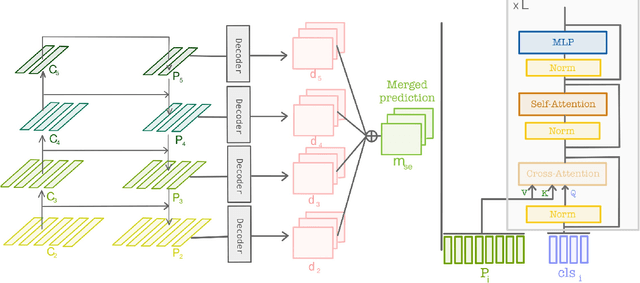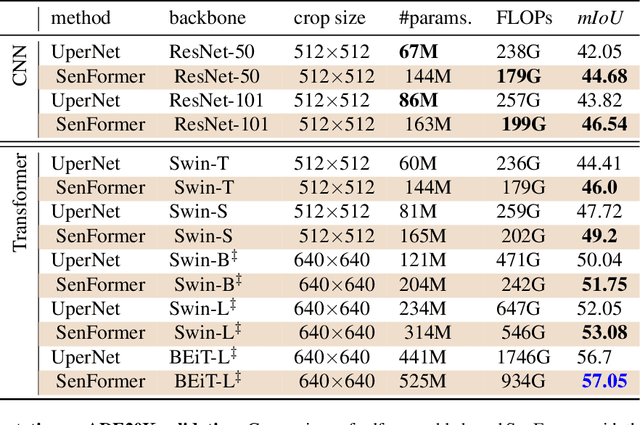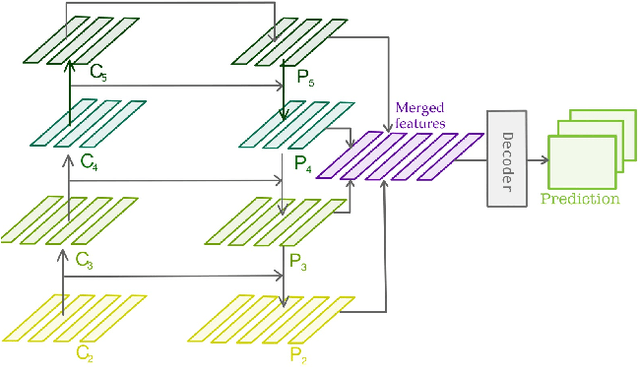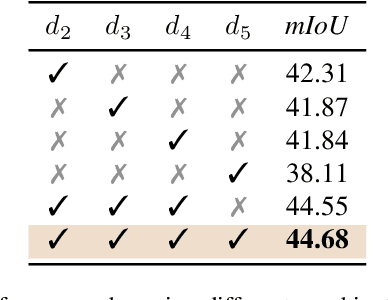Guillaume Thibault
Efficient Self-Ensemble Framework for Semantic Segmentation
Nov 26, 2021



Abstract:Ensemble of predictions is known to perform better than individual predictions taken separately. However, for tasks that require heavy computational resources, \textit{e.g.} semantic segmentation, creating an ensemble of learners that needs to be trained separately is hardly tractable. In this work, we propose to leverage the performance boost offered by ensemble methods to enhance the semantic segmentation, while avoiding the traditional heavy training cost of the ensemble. Our self-ensemble framework takes advantage of the multi-scale features set produced by feature pyramid network methods to feed independent decoders, thus creating an ensemble within a single model. Similar to the ensemble, the final prediction is the aggregation of the prediction made by each learner. In contrast to previous works, our model can be trained end-to-end, alleviating the traditional cumbersome multi-stage training of ensembles. Our self-ensemble framework outperforms the current state-of-the-art on the benchmark datasets ADE20K, Pascal Context and COCO-Stuff-10K for semantic segmentation and is competitive on Cityscapes. Code will be available at github.com/WalBouss/SenFormer.
Fuzzy Statistical Matrices for Cell Classification
Nov 18, 2016



Abstract:In this paper, we generalize image (texture) statistical descriptors and propose algorithms that improve their efficacy. Recently, a new method showed how the popular Co-Occurrence Matrix (COM) can be modified into a fuzzy version (FCOM) which is more effective and robust to noise. Here, we introduce new fuzzy versions of two additional higher order statistical matrices: the Run Length Matrix (RLM) and the Size Zone Matrix (SZM). We define the fuzzy zones and propose an efficient algorithm to compute the descriptors. We demonstrate the advantage of the proposed improvements over several state-of-the-art methods on three tasks from quantitative cell biology: analyzing and classifying Human Epithelial type 2 (HEp-2) cells using Indirect Immunofluorescence protocol (IFF).
 Add to Chrome
Add to Chrome Add to Firefox
Add to Firefox Add to Edge
Add to Edge